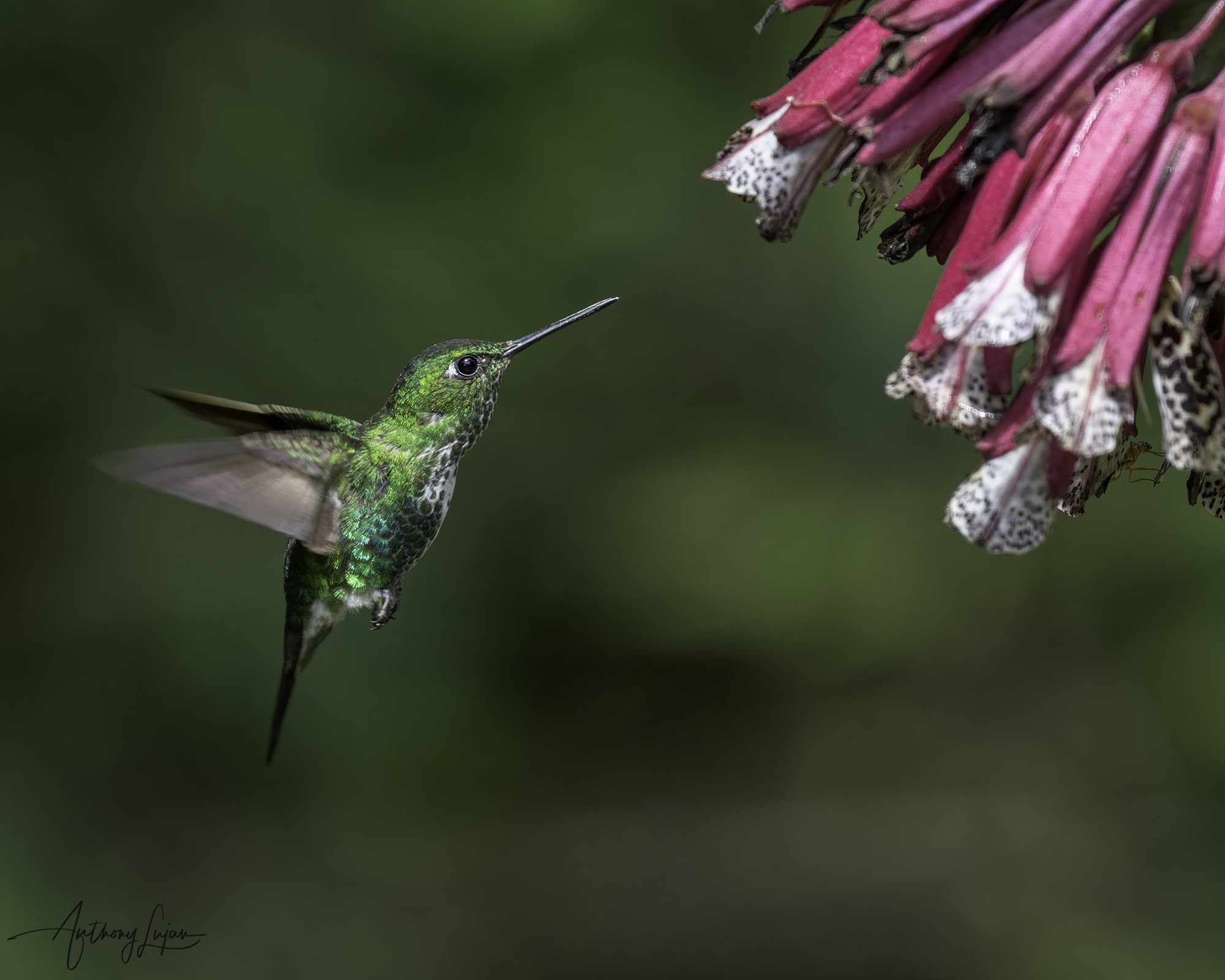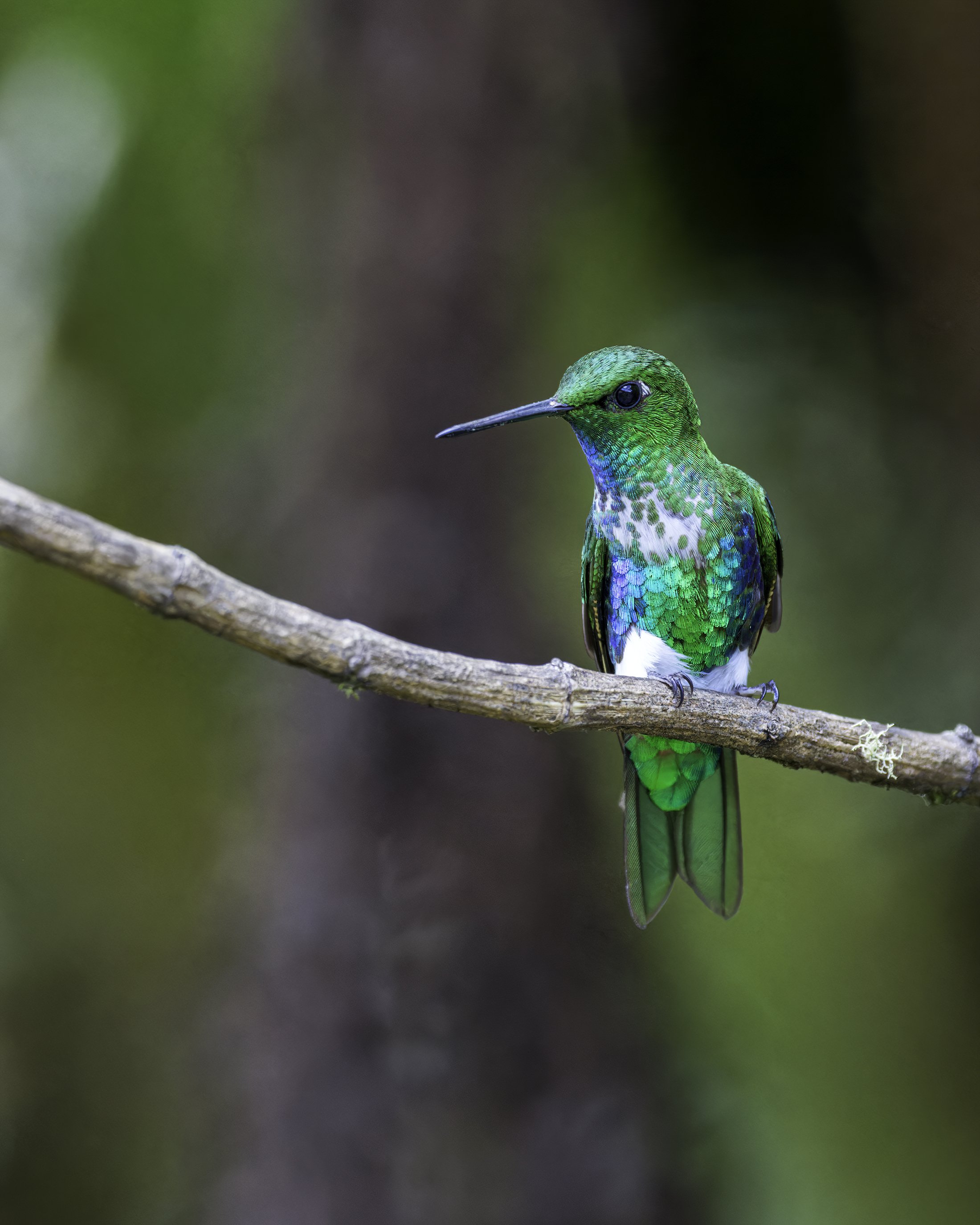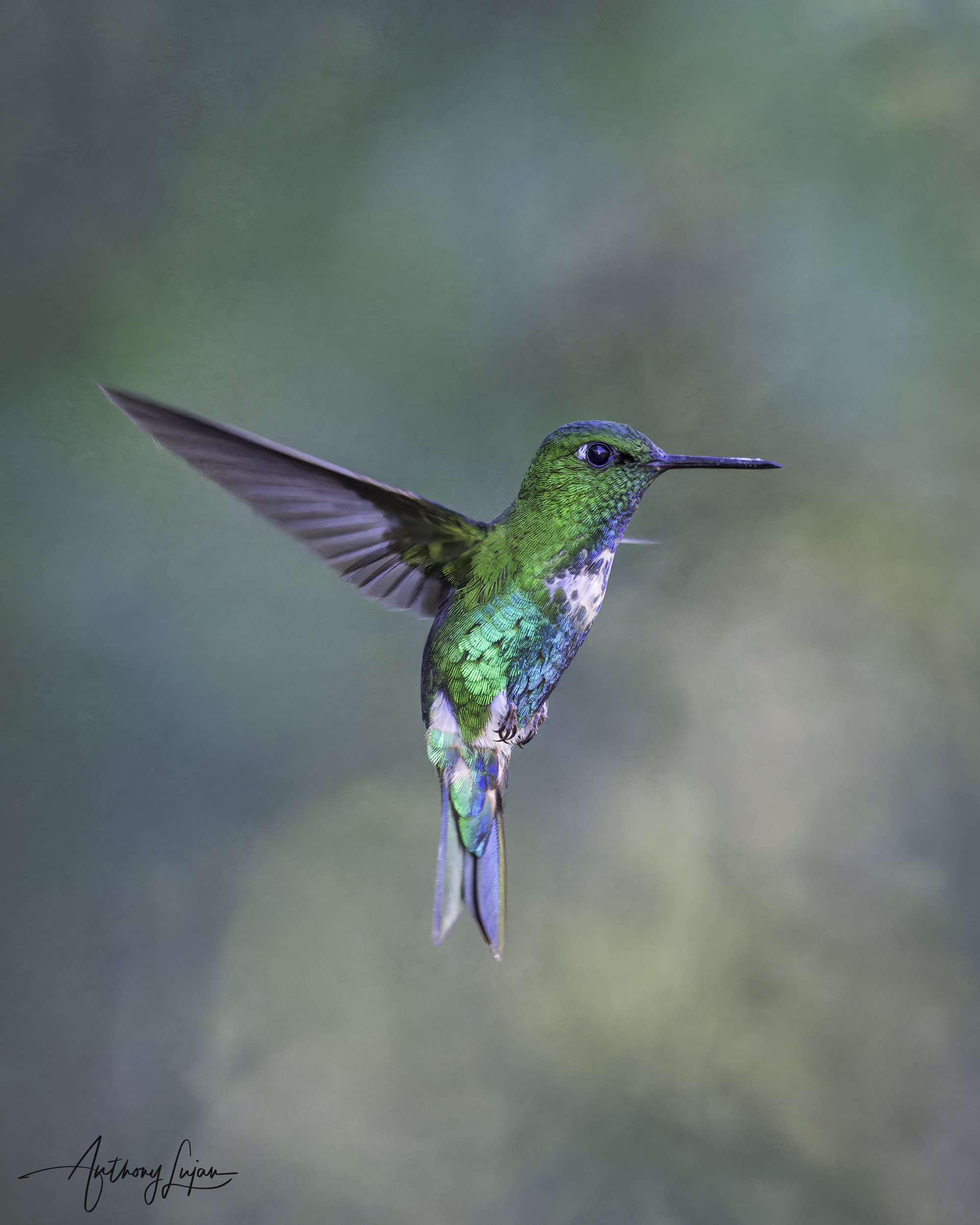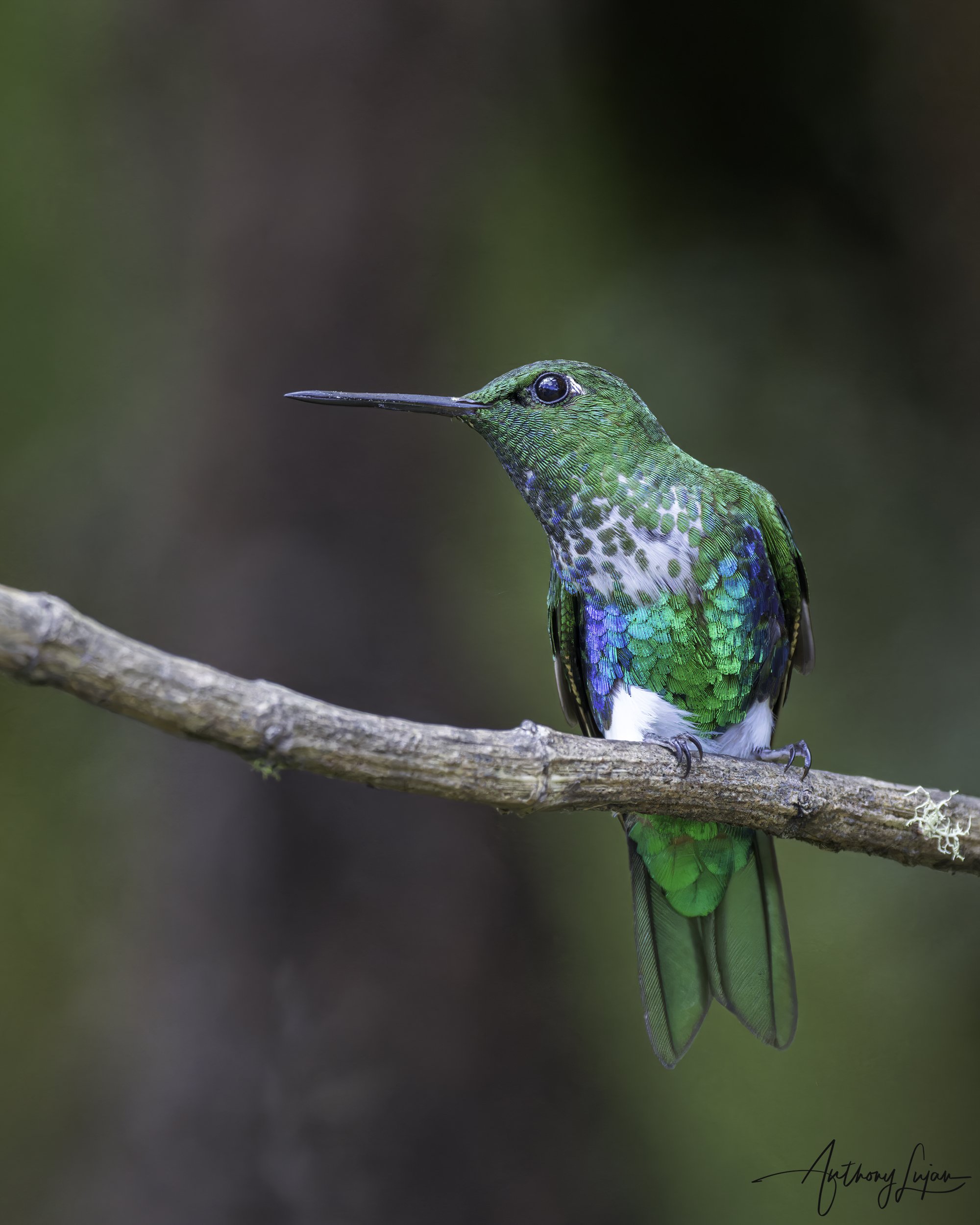Emerald-bellied Puffleg
Emerald-bellied Puffleg (Eriocnemis alinae)
Name Origin:
The genus Eriocnemis derives from Greek erion (“wool”) and knemis (“leg”), referring to the fluffy white “puffs” on the bird’s legs. The species name alinae honors Madame Alin, a 19th-century French natural history patron associated with early Andean collecting expeditions.
Quick Facts
🪶 Length: 9–10 cm (3.5–3.9 in)
⚖️ Weight: 5–6.5 g (0.18–0.23 oz)
🌎 Range: Andes of Colombia, Ecuador, and northern Peru
🧭 Elevation: 1,200–3,400 m (3,900–11,150 ft)
🌸 Diet: Nectar and small insects
🏡 Habitat: Cloud forest, forest edge, and elfin woodland
🧬 Clade: Heliantheini “Brilliants” (Andean montane hummingbirds)
📊 Status: Least Concern (IUCN 2024)
Subspecies & Distribution
1. Eriocnemis alinae alinae
Distribution: Southern and central Andes of Colombia (south from Boyacá) through the eastern Andes of Ecuador.
2. Eriocnemis alinae dybowskii
Distribution: Eastern slope of the Andes of northern and central Peru, south to Pasco.
Species Overview
The Emerald-bellied Puffleg is a dazzling Andean hummingbird of humid montane forests. Its rich emerald plumage and snow-white leg puffs make it one of the most striking mid-elevation Eriocnemis. Found along the eastern Andean slopes, it occupies mossy cloud forest and shrubby borders where nectar sources abound.
Male Description:
The male displays brilliant metallic emerald-green plumage throughout, accented by prominent white leg tufts, a dark blue tail, and a short, straight black bill. The underparts shine emerald with bronze reflections, and the crown often glows with greenish-gold iridescence in sunlight.
Female Description:
The female is slightly duller, with a paler belly, less intense green iridescence, and smaller leg tufts. Her tail is shorter, with faint bronze or bluish edges.
Habitat & Behavior:
Prefers humid cloud forests, forest borders, and montane shrubland between 1,200 and 3,400 meters. Commonly feeds on Fuchsia, Bomarea, and Palicourea blossoms, and supplements its diet with small arthropods. Territorial and often solitary, the Emerald-bellied Puffleg perches quietly in shaded areas, its white “puffs” gleaming against the dark foliage.
Conservation Note:
The Emerald-bellied Puffleg is listed as Least Concern by the IUCN and remains locally common in intact Andean habitats. However, deforestation and agricultural encroachment threaten lower-elevation populations, especially in Ecuador and Peru. The species persists in protected areas such as Podocarpus National Park (Ecuador) and Yanachaga-Chemillén National Park (Peru). Conserving continuous montane forest corridors is essential to ensure this radiant Heliantheini species continues to thrive across the northern Andes.
Below is the Emerald-bellied Puffleg (Eriocnemis alinae dybowskii)
Photographed at Owlet Lodge, Amazonas, Peru
This individual belongs to the subspecies dybowskii, which occurs along the eastern Andes of northern and central Peru, from Amazonas and San Martín south to Huánuco. It inhabits humid montane forest, cloud forest edge, and shrubby slopes between 1,800 and 2,800 meters elevation.












